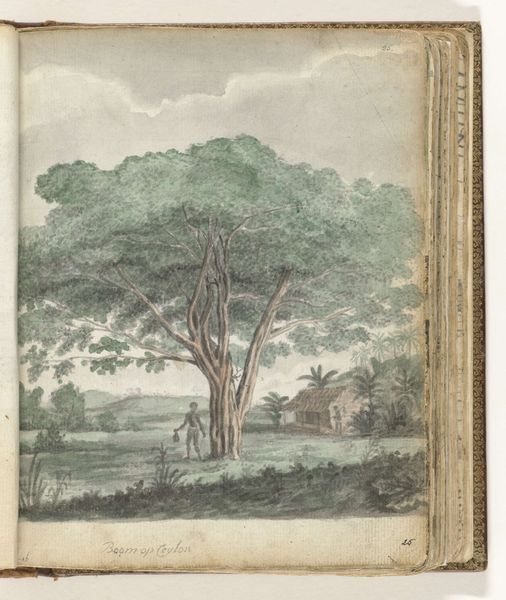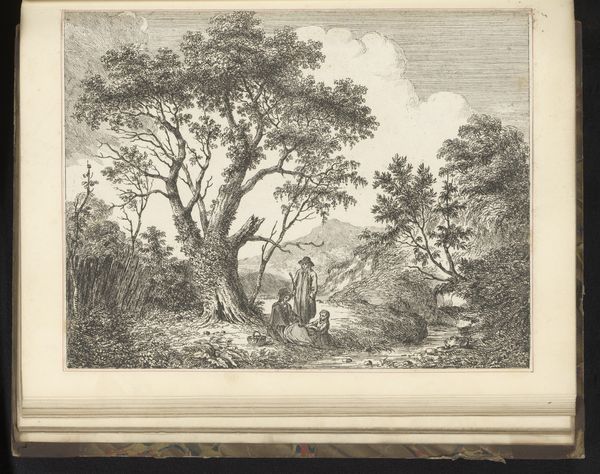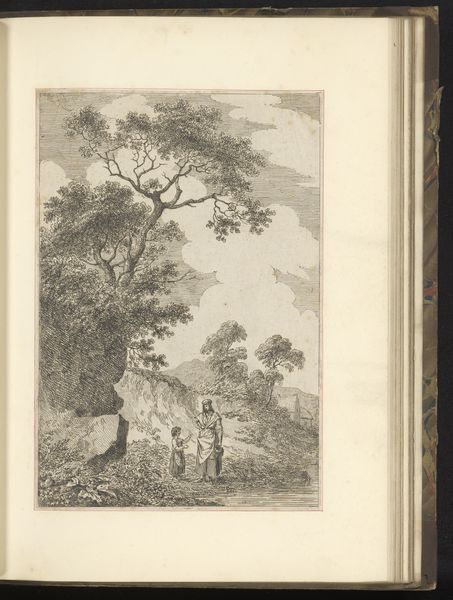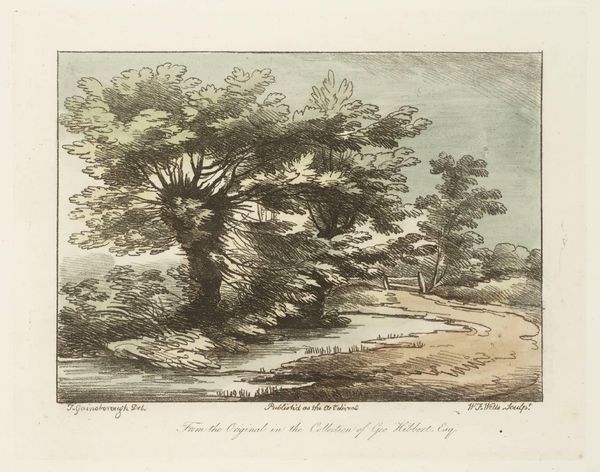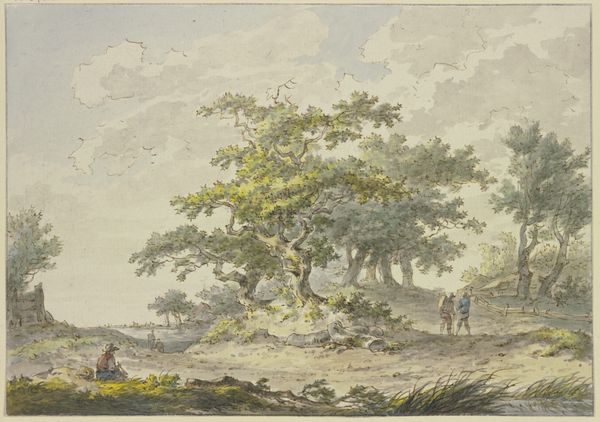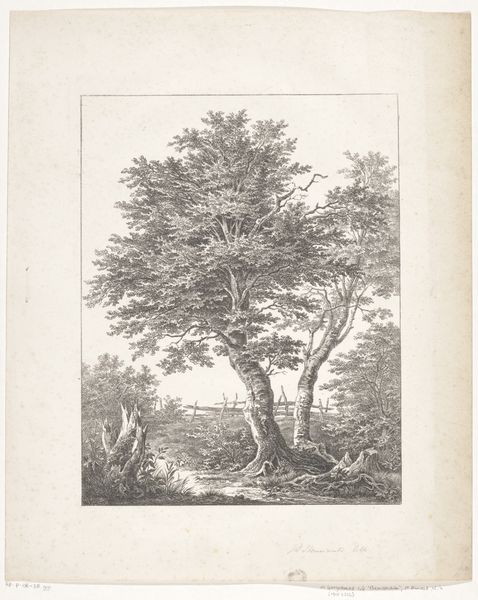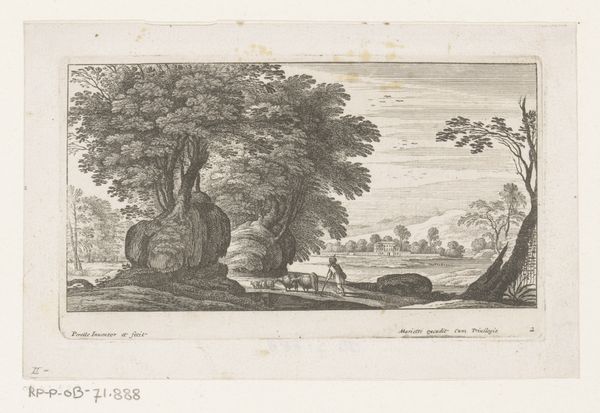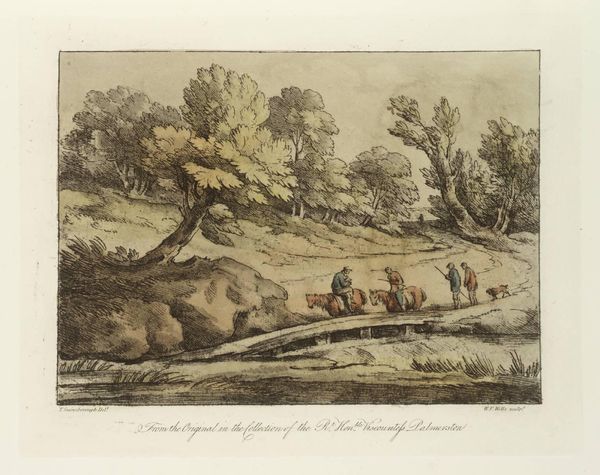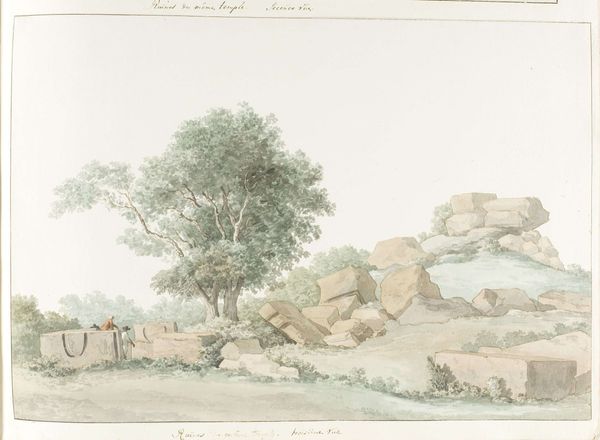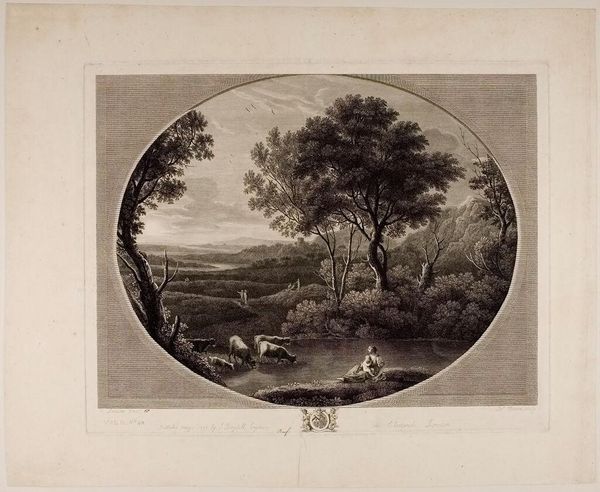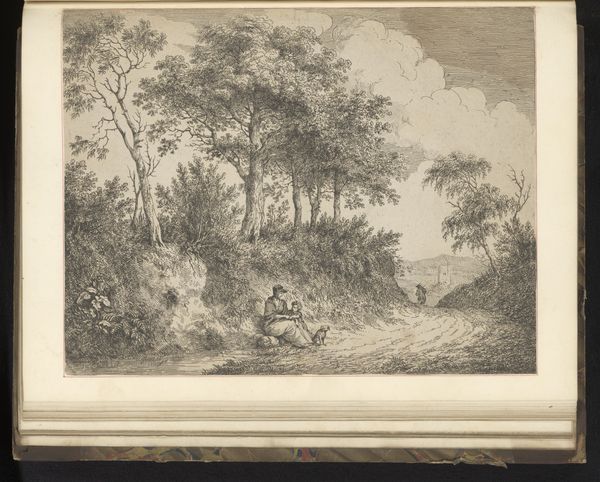
watercolor
#
neoclacissism
#
landscape
#
watercolor
#
coloured pencil
#
watercolour illustration
#
genre-painting
#
watercolor
Dimensions: height 422 mm, width 573 mm
Copyright: Rijks Museum: Open Domain
Editor: Here we have Louis Ducros’ watercolour, “Ruïne van Zeus Olympus tempel in oude Agrigento,” created in 1778. There’s a real stillness to it, despite the figures working amidst the ruins. What catches your eye in this piece? Curator: Well, first, isn’t it fascinating how Ducros captures the spirit of the Grand Tour? People traipsing off to see classical ruins were all the rage back then. The watercolour medium, I think, perfectly embodies that fleeting moment in time, almost as if the ruins themselves are dissolving before our very eyes. Do you get a sense of that transient feeling? Editor: Definitely. The light is so delicate, it makes the scene feel almost dreamlike, more imagined than real. Is he trying to say something about the impermanence of even the grandest civilizations? Curator: Perhaps. Or maybe he's reminding us that time keeps marching on, whether we're ready or not. See how he uses the trees to frame the ruins? It's like nature is reclaiming what was once human. And that lone figure by the rocks - is he lost in contemplation, perhaps? Editor: He does seem rather small and insignificant next to those massive stones. Almost as if challenging our role as mere mortals, versus time... I am particularly struck by how light, almost pastel the colours seem. Is that common with neoclassical art? Curator: It can be, particularly in watercolour. Neoclassicism was a response to the more flamboyant Baroque style. There was a newfound interest in clarity, order, and, yes, a certain lightness. Looking at it now, what feels most enduring about this artwork? Editor: For me, it’s the contrast – the decay of the temple versus the enduring beauty of the natural landscape, highlighting how even the most impressive structures eventually return to the earth. Curator: I agree; it is Ducros' genius touch of harmonising nature with Neoclassical artistic direction. And it’s this poignant reflection, I believe, that will keep people contemplating Ducros’ vision of Agrigento for generations to come.
Comments
No comments
Be the first to comment and join the conversation on the ultimate creative platform.
